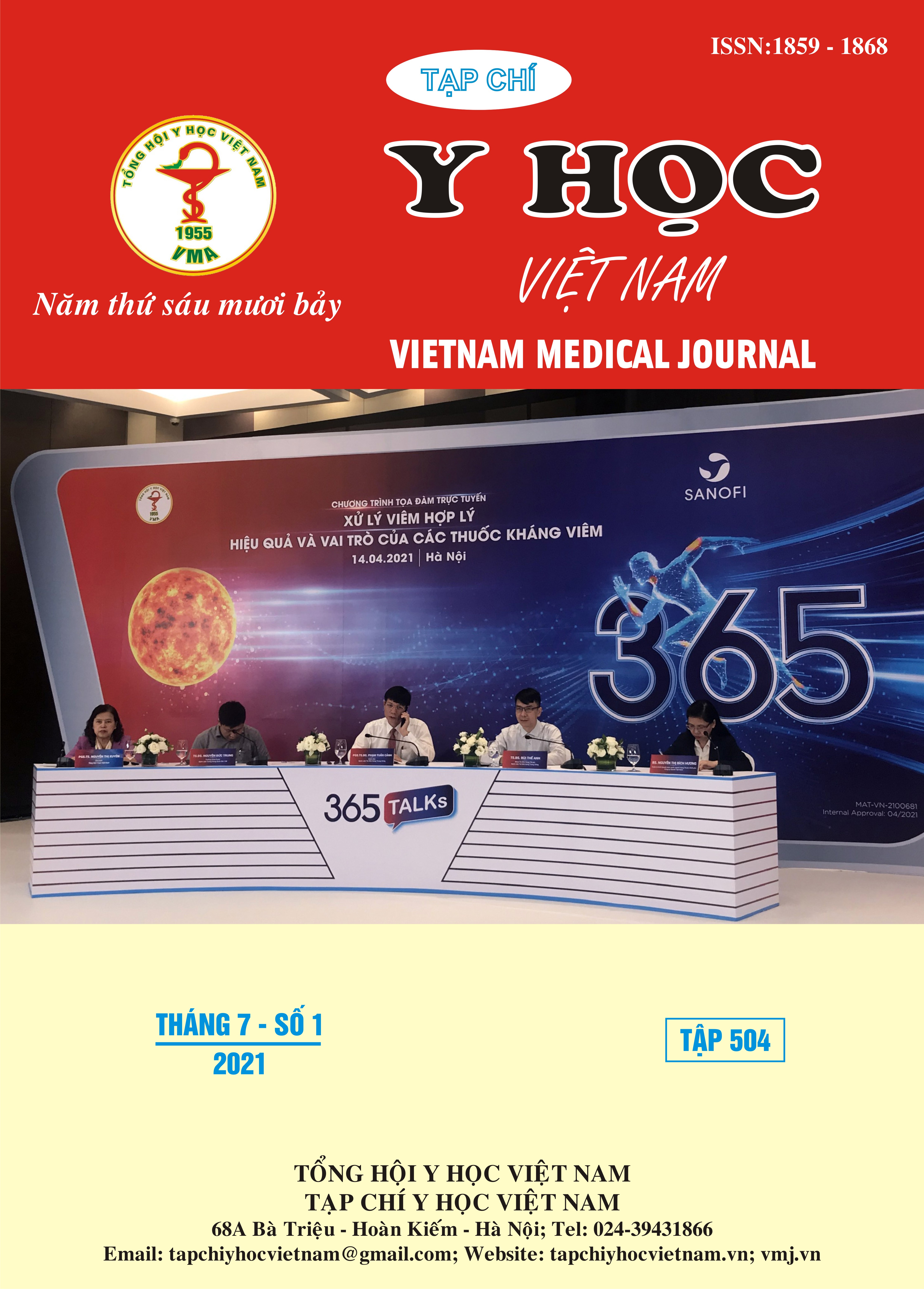EVALUATION OF RESULTS MAGNETIC RESONANCE AND PATHOLOGY ABOUT CIRCUMFERENTIAL RESECTION MARGIN IN RECTAL CANCER PATIENTS
Main Article Content
Abstract
Objective: Determine the value of magnetic resonance in the invasive assessment of the circumferential resection margin compared with the pathological results and comment on the relationship of some factors with circumferential resection margin status. Methods: Prospective cross – sectional description. Results: The sensitivity, specificity and accuracy of magnetic resonance in the invasive assessment of the circumferential resection margin compared with the pathological results were: 33,3% (95% CI: 4,3 – 77,7%); 93,7% (95% CI: 84,5 – 98,2%) và 88,4% (95% CI: 78,4 – 94,9%). Recording the factors: tumor location (p<0,05); intestinal wall invasion (T) on magnetic resonance (p<0,001) and tumor diameter (p<0,001), lymph node metastasis (N) (p<0,01); perineural invasion (p<0,05) at pathology was associated with circumferential resection margin status (the difference was statistically significant). Conclusion: The specificity and accuracy of magnetic resonance in the invasive assessment of the circumferential resection margin were quite high; however the sensitivity was still low. The risk factors associated with circumferential resection margin status were: tumor location, tumor diameter, intestinal wall invasion (T), lymph node metastasis (N) and perineural invasion.
Article Details
Keywords
Circumferential resection margin (CRM), mesorectal fascia (MRF)
References
2. Beets-Tan R.G.H., Lambregts D.M.J., Maas M., et al. (2018). Magnetic resonance imaging for clinical management of rectal cancer: Updated recommendations from the 2016 European Society of Gastrointestinal and Abdominal Radiology (ESGAR) consensus meeting. Eur Radiol, 28(4), 1465–1475.
3. MERCURY Study Group (2006). Diagnostic accuracy of preoperative magnetic resonance imaging in predicting curative resection of rectal cancer: prospective observational study. BMJ, 333(7572), 779.
4. Javier Suárez A, Jiménez G, Arias F, Vera R. (2020). What is the Meaning of the Circumferential Resection Margin Involvement by Lymph Nodes Detected by Magnetic Resonance?. Clin Surg. 5, 2702. . .
5. Kang B.M., Park Y.-K., Park S.J., et al. (2018). Does circumferential tumor location affect the circumferential resection margin status in mid and low rectal cancer?. Asian J Surg, 41(3), 257–263.
6. Oh S.J. and Shin J.Y. (2012). Risk factors of circumferential resection margin involvement in the patients with extraperitoneal rectal cancer. J Korean Surg Soc, 82(3), 165–171.
7. Rullier A., Gourgou-Bourgade S., Jarlier M., et al. (2013). Predictive factors of positive circumferential resection margin after radiochemotherapy for rectal cancer: the French randomised trial ACCORD12/0405 PRODIGE 2. Eur J Cancer Oxf Engl 1990, 49(1), 82–89.
8. Park J.S., Huh J.W., Park Y.A., et al. (2014). A circumferential resection margin of 1 mm is a negative prognostic factor in rectal cancer patients with and without neoadjuvant chemoradiotherapy. Dis Colon Rectum, 57(8), 933–940.


